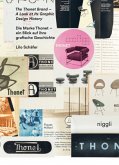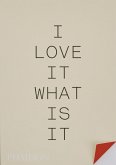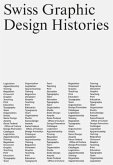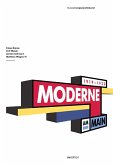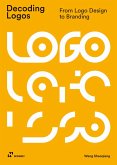Nicht Funktion und Gebrauch zeichnen das Bauhaus aus, sondern Symbolik. Ob Quadrat, Dreieck oder Kreis, ob Wagenfeld-Lampe, Schlemmer-Kopf oder weisse Kuben mit Flachdach: Das Bauhaus hat ikonische Bildzeichen und einen Stil kreiert, der weder funktional noch sozial ist, aber visuell prägnant.
Bauhaus-Gründer Walter Gropius zielte von Anfang an darauf, aus dem Bauhaus eine Marke zu entwickeln - mit Erfolg. Sei es in Konsum, Politik oder Kultur: Mehr als achtzig Jahre nach seiner Schliessung ist das Bauhaus präsenter als je zuvor. Es ist inzwischen zu einer partizipativen Marke geworden, die nicht mehr zentral gesteuert werden kann, sondern an der unzählige Produzenten und Konsumenten mitgeschrieben haben. Das einstige Verspechen nach Funktionalität und sozialer Verpflichtung bleibt dabei allerdings uneingelöst. Das Buch von Philipp Oswalt, ehemaliger Direktor der Stiftung Bauhaus Dessau, widmet sich anhand zahlreicher Bildbeispiele und gehaltvoller Texte dieser prominenten Markenbildung und -verwendung.
Bauhaus-Gründer Walter Gropius zielte von Anfang an darauf, aus dem Bauhaus eine Marke zu entwickeln - mit Erfolg. Sei es in Konsum, Politik oder Kultur: Mehr als achtzig Jahre nach seiner Schliessung ist das Bauhaus präsenter als je zuvor. Es ist inzwischen zu einer partizipativen Marke geworden, die nicht mehr zentral gesteuert werden kann, sondern an der unzählige Produzenten und Konsumenten mitgeschrieben haben. Das einstige Verspechen nach Funktionalität und sozialer Verpflichtung bleibt dabei allerdings uneingelöst. Das Buch von Philipp Oswalt, ehemaliger Direktor der Stiftung Bauhaus Dessau, widmet sich anhand zahlreicher Bildbeispiele und gehaltvoller Texte dieser prominenten Markenbildung und -verwendung.
"The book wants to clean up-to break with a constructed and canonized myth of Bauhaus, which is in stark contrast to what the institution had achieved in the 14 years of its existence. Author Philipp Oswalt has a grandiose knowledge of the subject. In addition, he can write excellently, getting his theses to the point, so that the reading can be enjoyed in one go." Bettina Maria Brosowsky, Bauwelt
"Oswalt's view is sober, his statements have been thoroughly researched and backed up with sources. And it's a nice book to look at, too." Stefan Möller, LEO Magazin
"With its release at the end of December 2019, this publication is something like the culmination of the series of anniversary books." Bern Hüttner, Rosa Luxemburg Stiftung
"The book is a counterpoint to the often unreflected exaggeration of the Bauhaus in the previous year, in which the impression was often given that before the Bauhaus there was nothing and that everything that was built with a flat roof in the 1920s was 'Bauhaus'." Thomas Steinberg, Mitteldeutsche Zeitung
"A must for those interested in art, design and architecture!" Herbert Pardatscher-Bestle, Bücherrundschau
"Strong stuff for the awe-inspiring incense-wielding design community." Bettina Scheurer, ekz.bibliotheksservice
"The Jacobinic zeal for revelation of this displeased author would border on pure reading torture if the book had not been so thoroughly researched and factually coolly written. It provides the best enlightening research into the causes of the power of artistic bearers of hope who satisfy the hunger for promises of salvation." Michael Mönninger, Süddeutsche Zeitung
"Particularly pleasant when reading the exciting essays: The negation of an exceptionally art-historical and art-industrial consideration of the Bauhaus phenomenon." Reinhart Bünger, Der Tagesspiegel
"Ready to use and easy to read, this catalogue lies in your hand: well structured, interesting articles, conclusively illustrated, the footnotes where you find them." Martina Pfeifer Steiner, nextroom.at
"Oswalt's view is sober, his statements have been thoroughly researched and backed up with sources. And it's a nice book to look at, too." Stefan Möller, LEO Magazin
"With its release at the end of December 2019, this publication is something like the culmination of the series of anniversary books." Bern Hüttner, Rosa Luxemburg Stiftung
"The book is a counterpoint to the often unreflected exaggeration of the Bauhaus in the previous year, in which the impression was often given that before the Bauhaus there was nothing and that everything that was built with a flat roof in the 1920s was 'Bauhaus'." Thomas Steinberg, Mitteldeutsche Zeitung
"A must for those interested in art, design and architecture!" Herbert Pardatscher-Bestle, Bücherrundschau
"Strong stuff for the awe-inspiring incense-wielding design community." Bettina Scheurer, ekz.bibliotheksservice
"The Jacobinic zeal for revelation of this displeased author would border on pure reading torture if the book had not been so thoroughly researched and factually coolly written. It provides the best enlightening research into the causes of the power of artistic bearers of hope who satisfy the hunger for promises of salvation." Michael Mönninger, Süddeutsche Zeitung
"Particularly pleasant when reading the exciting essays: The negation of an exceptionally art-historical and art-industrial consideration of the Bauhaus phenomenon." Reinhart Bünger, Der Tagesspiegel
"Ready to use and easy to read, this catalogue lies in your hand: well structured, interesting articles, conclusively illustrated, the footnotes where you find them." Martina Pfeifer Steiner, nextroom.at



